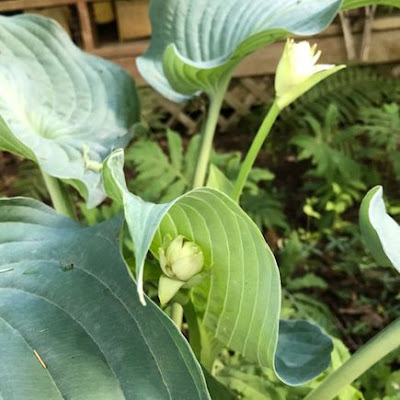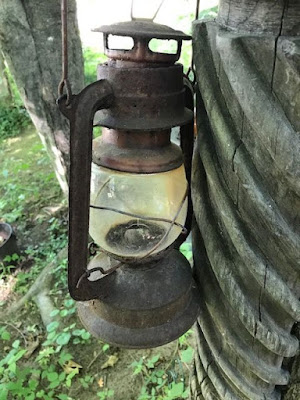 |
| Birch Hollow Photo by Suzanne Currie |
It wasn't until my parents had passed on, that I really started to develop an interest in ancestry, primarily because Suzanne, my business partner and significant other, was deeply, and I mean this sincerely, imbedded in family research. Being passionate about history and antiquities, particularly our own modest Currie heirlooms (two small paintings was pretty much it), I felt there were some missing paragraphs in the Currie / Jackson family chronicle. Although there had been a family tree initiated by a cousin of mine, it was full of inaccuracies and missing information. It was a template however, for Suzanne to use as a step-up to a broader and more intense protocol of research using of course, our subscription to Ancestry.ca.
I don't know why, or at what age that I developed the opinion I must have been adopted, but it was a nagging feeling I couldn't shake. But an issue I could also never address. I was an only child, because my mother had suffered a miscarriage. I was the second attempt child, you might say, yet there was always some strange doubt aroused, maybe because of their evasiveness at times, that seemed to fit an adoption scenario that I just couldn't prove. A lot of kids go through this stage of doubt, only to find out the proof they need later in life. Even though I had a lot of family traits, physically and otherwise, my parents always seemed to leave doubt in my mind, that of course, was the seeding in my psyche suggesting I was from another family.
Consider this point of view. My parents were hard core minimalists to the day they died. They hated collectables, and memorabilia, and even family photographs were modest compared to images kept by average Canadian families. I began my life as a hoarder in training, and it used to drive my mother nuts. Every day, on the way home from school, I would have filled my pockets full of found objects, from chestnuts off the Torrance hillside, in Burlington, to car parts left after an accident on the Lakeshore. When I spent most of a Saturday at the Burlington arena, I would arrive at our Harris Crescent apartment possessing one or more "sliver" hockey sticks thrown over the boards during a game, and at least three hockey pucks deflected into bleachers. I was a high ranking Rink Rat in my youth, which I carried over to the Bracebridge arena when we moved north in the late winter of 1966. When I wasn't picking up what I believed was useful debris on my walks, to and from school, I'd find in the weekly garbage set out at curbside, much to the chagrin of our neighbors and of course my mother Merle, who used to apologize to one and all for my strange garbage day behaviour.
I've thought about this along, seeing as they both watched me entrench myself wholeheartedly in the antique trade, which obviously nurtures a hoarding mentality, although it's not always to the exponent of ten. I've always been about a seven point five on the hoarder scale. Merle used to question me constantly about what made me want to collect so much stuff, and invest so much money in these old and musty antique things. I remember once coming home to our apartment in Bracebridge, and finding that where my favorite china cupboard had been in our tiny and modest kitchen, was no longer in place. She told me she had to get rid of the clutter and as she referred to the 1900's cabinet as a "rat's nest of useless items." I used to stare at the neat relics inside every morning, lunch and dinner that I sat eating my meals at that wonderfully nostalgic kitchen table, which by the way faced the same fate a few years later. I kind of thought these items would one day be mine as a modest inheritance. Just like the two press back chairs that used to be in my bedroom. One day I found them outside by the garbage bins, for someone to adopt, and when I was the adoptee, my mother refused to let them back in the house. When I returned home after my first year at university, I found my room basically emptied. Merle had thought it was a nice gesture to give my childhood possession (which I wasn't finished with yet) to some neighborhood families a little down on their luck. I was starting to feel pretty unlucky myself in those days.
I inherited two nice little paintings that had been in our family forever, and she did give these to me when I finally moved out. I still have them in our living room here at Birch Hollow, and I still gaze upon them as I did when I was a kid, home sick from school, and really needing a diversion from a bad cold or the flu. They gave me reason to exercise my imagination, by immersion in each, and they have never let me down through a lifetime. I'm just glad they survived to this new century, without have been chucked in the garbage because they were deemed objects and adornments of a cluttered lifestyle.
As far as my relationship to the Currie and Jackson family, well, the good news is that I'm the real deal as far as bloodline, thanks to the relentless searching by Suzanne, through all online records she had found and exploited for my benefit and our family generally. Take for instance my great grandmother. It was said, by my mother, that her grandmother was of the Pennsylvania Dutch, and she used to sit on the porch of their farmhouse in Trenton, Ontario, smoking a clay pipe, wearing traditional garb. Her married name was Sandercock, of English background. Yet all the meat of the family chronicle, dealt with the Jackson, British side. The Sandercock wing was pretty much a non-starter as far as any discussion about worthy family ties and connectedness. When Suzanne dug a little deeper into this pipe smoking great grandmother of mine, by golly, it opened up the gates of ancestral wonderment. This diminutive elder of our family, was of a much broader, and truthfully, a more exciting chronology than either the Curries, Jacksons, or Sandercocks. She was of the Dutch Vandervoort family and that included connections with the Meyers of German ancestry, with family notches going back many centuries in Europe, and then belonging to the class of early settlers in America, in the New York area. I stopped worrying that I had been adopted, and began enthusiastically following Suzanne's lead. Every week she would find something more exciting, and a new path to follow deeper into our clan's history, all of it adding so much more depth than I could have ever imagined; and I do believe it would have been a great period for my mother, if she had lived to learn more about her pipe smoking grandmother, who was definitely well appointed in American and Canadian history, as a United Empire Loyalist.
I wasn't adopted. That was good news. And going back with Suzanne on these family history junkets, each week here at Birch Hollow, I can honestly claim to belong to many interesting and colorful antiquarians, who had amazing adventures of their own, including participation in the American Revolution, the War of 1812. I think my own adventures as a antique and heirloom collector, and dealer, makes a lot more sense to me now than it ever did as I was growing up ever questioning my mysterious past. I would like to, in future posts, give you a few more examples of how Suzanne's mission to uncover our family's past, has manifested, without our really intending as much, into the character of our antique enterprise; especially when it comes to respect for all the family heirlooms from others, we come to possess as temporary stewards. It has all strengthened our interest in traditions, and heritage as far as families are involved. It has made this antique-thing so much more personal and intimate, and it is in this vein of maturity in this business, that does, in fact, make us more astutely aware of the sensitivity required to work with kinfolk to settle estates, and handle heirloom items respectfully.
More on ancestry and its immense value in the contemporary sense, coming up in future posts.






















